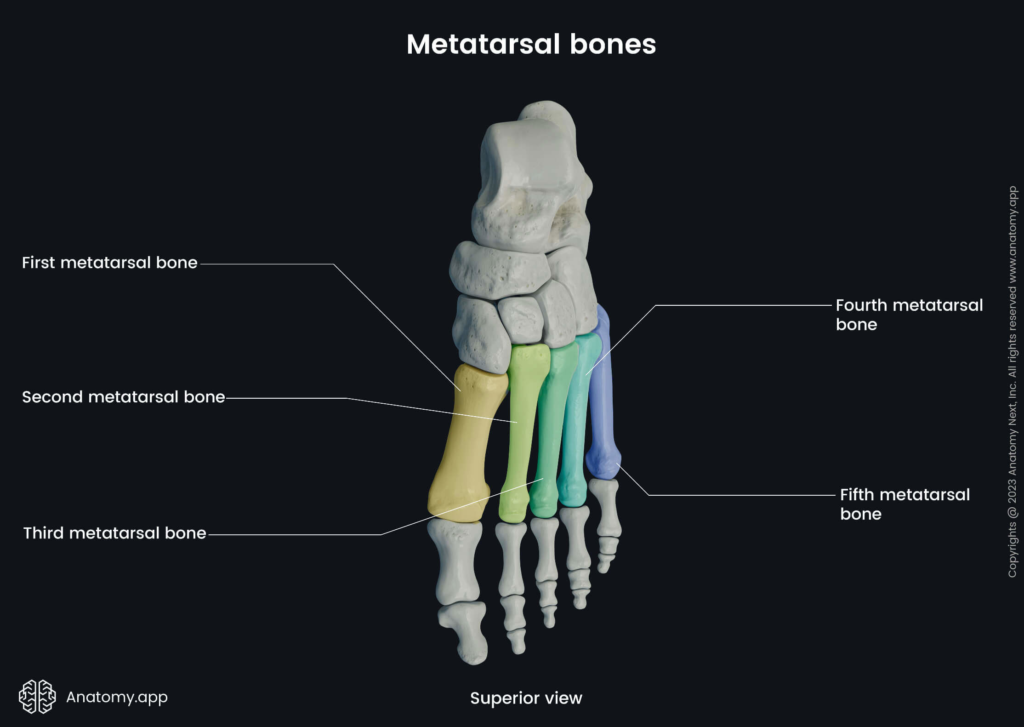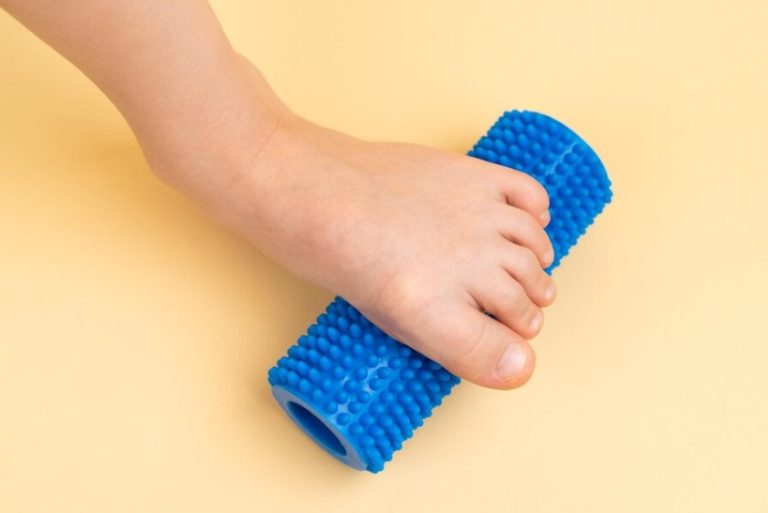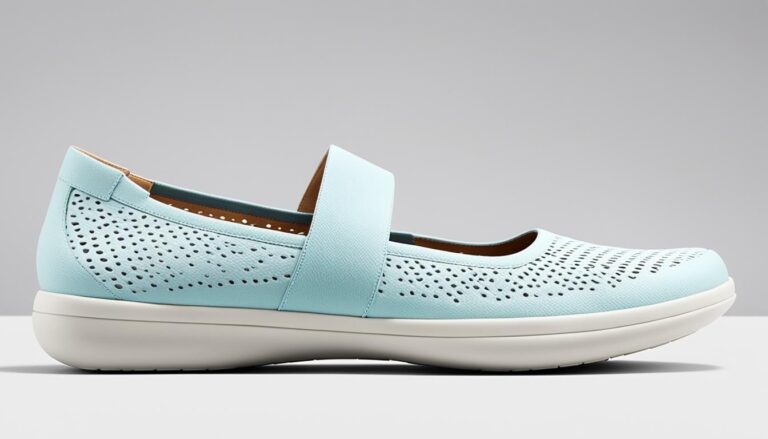Best Inserts for Ball of Foot Pain: A Guide to Finding Relief
Finding effective relief for ball of foot pain is crucial for maintaining overall foot health and comfort. Many individuals suffer from conditions like metatarsalgia, which can make even simple activities painful. The best inserts for ball of foot pain often include features like enhanced cushioning, shock absorption, and arch support, designed specifically to alleviate pressure on the metatarsal area.
Individuals struggling with discomfort in the balls of their feet can benefit significantly from the right insoles. Various products on the market cater to different needs, including options that offer varying degrees of firmness and support. These inserts can transform ordinary shoes into comforting solutions that promote better mobility and reduce pain.
Exploring top recommendations for insoles can reveal options that not only relieve pain but also improve overall foot alignment. With the right knowledge, anyone can select inserts that enhance their daily experiences and help them regain their active lifestyles.
Understanding Ball of Foot Pain
Ball of foot pain, often experienced as discomfort in the area just behind the toes, can significantly impact daily activities. Several factors contribute to this pain, including underlying conditions and anatomical structures. Recognizing the causes, symptoms, and anatomy of the ball of the foot is crucial for effective relief and management.
Causes of Ball of Foot Pain
Ball of foot pain can arise from various conditions, primarily affecting the metatarsal bones. Common causes include metatarsalgia, inflammation, neuroma, and calluses.
- Metatarsalgia: A condition characterized by inflammation of the metatarsal heads, leading to sharp pain in the ball of the foot.
- Neuroma: Growth of nerve tissue often occurs between the third and fourth toes, causing burning and tingling sensations.
- Pressure and Strain: High-impact activities or ill-fitting footwear can place excessive pressure on the ball of the foot, exacerbating pain.
Understanding these causes allows individuals to identify triggers and seek appropriate interventions.
Common Symptoms
Symptoms of ball of foot pain vary widely but typically include:
- Sharp, aching, or burning pain in the ball of the foot.
- Discomfort that worsens when standing, walking, or running, particularly on hard surfaces.
- Numbness or tingling sensations in the toes, which may indicate nerve involvement.
People experiencing these symptoms should monitor their foot health, as ignoring pain can lead to chronic conditions.
Anatomy of the Ball of the Foot
The ball of the foot comprises several key structures that support weight-bearing activities. It includes the:

- Metatarsal Bones: Five long bones that connect the toes to the midfoot, crucial for weight distribution.
- Muscles and Tendons: These provide stability and flexibility, allowing for proper movement and balance.
- Plantar Fat Pads: These act as natural shock absorbers, cushioning the metatarsal heads from impact.
Injury or inflammation in any of these structures can lead to pain in the ball of the foot, impacting mobility and comfort. Understanding this anatomy helps individuals appreciate the complexity of their foot health.
Types of Inserts for Ball of Foot Pain
Inserts designed for ball of foot pain come in various forms, each providing unique benefits. These inserts aim to alleviate discomfort and improve foot function effectively.
Orthotic Insoles
Orthotic insoles are specifically designed to provide support and alignment for the feet. They often feature customized arch support, which can help distribute weight more evenly across the foot. This is particularly beneficial for individuals suffering from metatarsalgia or similar conditions.

These insoles typically include additional cushioning to absorb shock, reducing pressure on the ball of the foot during movement. Many orthotics for ball of foot pain are made from durable materials that maintain their shape over time. This makes them suitable for daily use in various types of footwear. They can be especially effective when paired with supportive shoes.
Metatarsal Pads
Metatarsal pads are a favored choice for those experiencing localized pain in the ball of the foot. These pads are placed directly under the metatarsal area, providing targeted cushioning and alleviating pressure. They are typically designed from soft, cushioned materials to enhance comfort.
The design of metatarsal pads can vary, some offering a full-length option while others provide a more discrete fit. This versatility allows users to choose based on their footwear needs. Their ease of use and non-intrusive nature make them suitable for various shoe styles, including casual and athletic footwear.
Gel Inserts
Gel inserts are notable for their excellent shock-absorbing properties. They provide a soft, cushioned feel that can significantly reduce impact with each step. These inserts are especially helpful for individuals who spend long hours on their feet, as they help to alleviate fatigue.

Gel insoles can come in different shapes and thicknesses, catering to diverse preferences and footwear requirements. They often incorporate extra cushioning in the forefoot area, which is vital for those suffering from ball of foot pain. The flexible nature of gel allows it to conform to the foot, providing personalized support and comfort.
Choosing the Right Inserts
Selecting the appropriate inserts for ball of foot pain is essential for effective relief and comfort. Several factors contribute to finding the right choice, including fit, material, and the potential for customization. Understanding these aspects will help individuals make informed decisions.
Factors to Consider
When choosing inserts, the first step is to identify specific needs based on foot characteristics and pain levels. Key factors include arch type, foot shape, and the nature of discomfort. For instance, individuals with high arches may benefit from inserts that provide additional support and cushioning. Those experiencing persistent pain should consider the level of firmness required.
Shock absorption is another critical aspect. Good inserts will minimize impact on the ball of the foot during movement, enhancing comfort and reducing pain. Overall, understanding personal requirements enables individuals to select the most suitable solution for their foot health.
Sizing and Fit
Proper sizing and fit are crucial in ensuring that inserts perform effectively. Ill-fitting inserts can lead to discomfort or exacerbate pain. To achieve an optimal fit, individuals should measure their feet accurately, considering factors such as width and arch height.
When purchasing ready-made inserts, referring to the manufacturer’s sizing chart can help in making the right choice. If choosing customizable options, individuals often have the opportunity to create a mold based on their foot shape, enhancing the level of support. A well-fitting insert should feel secure without slipping or causing pressure points.
Material and Durability
The materials of the inserts significantly impact comfort and longevity. Common materials include gel, foam, and thermoplastic, each offering distinct benefits. Gel inserts provide excellent shock absorption and comfort, while foam can conform well to foot shape.
Durability is also a vital concern. High-quality materials will withstand daily wear and tear. Look for inserts that maintain their structure and support over time. Materials that are breathable can help minimize moisture buildup, enhancing comfort for prolonged use. Opting for durable inserts ensures a better long-term investment in foot health.
Customizable Options
Customizable inserts can be particularly beneficial for those with specific foot conditions. Various options allow individuals to tailor their inserts based on personal preferences and requirements. Custom orthotics may offer targeted support for arch height, foot alignment, and pressure distribution.
These solutions often require a professional assessment to create the most effective design. Some retailers also provide semi-customizable options, allowing individuals to select key features like cushioning level and arch type while maintaining affordability. Customizable inserts can significantly improve overall comfort and effectiveness for managing ball of foot pain.
Specific Conditions and Insert Selection
Selecting the right inserts depends on specific foot conditions affecting ball of foot pain. It is essential to understand how different conditions require tailored support to alleviate discomfort effectively.
Plantar Fasciitis
For individuals dealing with plantar fasciitis, proper arch support is crucial. The condition often results in pain at the heel and along the arch, leading to discomfort in the ball of the foot. Inserts designed specifically for plantar fasciitis feature enhanced arch support to help redistribute pressure and reduce strain.
These inserts often include cushioning materials to absorb shock and provide comfort during walking or standing. Look for options with a deep heel cup to stabilize the foot and maintain proper alignment. Products like metatarsal pads are often recommended, as they can relieve pressure on the forefoot effectively.
Overpronation
Overpronation occurs when the foot rolls excessively inward during movement. This can contribute to pain in the ball of the foot due to improper weight distribution. Inserts for overpronation typically include medial support and additional firmer arch structures to encourage foot stability.
These inserts can help correct alignment, promoting a more neutral gait. Features like motion control and extra cushioning in the forefoot area can be advantageous. Users should seek out inserts that maintain firmness while providing sufficient comfort to address pain.
High Arches
Individuals with high arches often experience concentrated pressure on the ball of the foot. Selecting the right insert is vital to alleviate pain associated with this condition. High-quality inserts usually include additional cushioning under the forefoot area and arch support designed to accommodate the foot’s natural curve.
Inserts tailored for high arches often have a soft top layer to enhance comfort while providing supportive materials beneath. It’s recommended to opt for custom or semi-custom inserts as they adapt better to individual foot shapes. For those seeking effective relief, options like the Walkomfy Pain Relief Orthotics offer both comfort and support needed for high arches.
Inserts by Shoe Type
Choosing the right insoles for specific types of shoes is crucial for managing ball of foot pain effectively. Inserts can provide tailored support, comfort, and shock absorption, reducing discomfort during daily activities and special occasions.
For Running Shoes
In running shoes, the main focus should be on cushioning and support. Insoles designed for running often feature shock-absorbing materials that minimize impact on the ball of the foot.
Look for options with deep heel cups and arch support to enhance stability. Models like the Walk-Hero Comfort and Support Insoles offer targeted support and are often affordable.
In addition, breathable and moisture-wicking materials help keep feet dry during long runs. The right insoles can significantly reduce fatigue, making them essential for any runner.
For High Heels
High heels place excess pressure on the ball of the foot, making well-chosen insoles essential. Inserts designed specifically for high heels typically include metatarsal pads that distribute weight evenly.
These pads help alleviate pressure points, providing comfort without compromising style. Many options are slim and discreet, fitting well inside open-toed shoes or pumps.
Brands like Dr. Scholl’s offer specialized insoles for high heels that provide cushioning while maintaining a fashionable fit. They’re an excellent choice to help women enjoy their favorite heels sans discomfort.
For Work Boots
For those who spend long hours in work boots, comfort and support are vital. Inserts for work boots often feature rugged designs with additional cushioning to manage both standing and walking.
Insoles like the Superfeet All-Purpose Support are popular for this purpose. They provide excellent arch and heel support, reducing strain on the ball of the foot during extended wear.
Moreover, work boot inserts often include anti-fatigue technology that helps maintain energy levels throughout the day. This is crucial for professions requiring long hours on one’s feet.
Using Inserts Effectively
Inserts can significantly enhance comfort and support for individuals experiencing ball of foot pain. To maximize their effectiveness, proper placement, regular maintenance, and timely replacement are crucial.
Proper Placement
Correct positioning of inserts is essential to provide optimal support and alleviate pain. The insert should sit snugly in the shoe, ensuring firm contact with the foot.
To achieve this:
- Align the Heel: The heel of the insert should align with the back of the shoe.
- Secure the Metatarsal Area: The metatarsal support should rest directly beneath the ball of the foot.
This alignment helps distribute weight evenly as one walks and prevents unnecessary strain on the foot. When standing, the insert should provide stability and even pressure, enhancing the overall feel during various activities.
Maintenance and Care
Regular maintenance of inserts helps prolong their lifespan and effectiveness. Keeping them clean is important for hygiene and performance. To care for them:
- Regular Cleaning: Wipe inserts with a damp cloth to remove dirt and sweat.
- Drying Properly: Allow them to air dry completely, avoiding direct sunlight or heat sources.
Inspect inserts frequently for signs of wear, such as cracks or significant cushioning loss. This vigilance ensures that they continue to offer the necessary support essential for keeping individuals on their feet comfortably.
When to Replace Inserts
Recognizing when to replace inserts is vital for maintaining foot health. Over time, the cushioning and structural integrity may diminish.
Consider replacing inserts when:
- Visible Wear and Tear: Significant cracks or flattened areas can compromise support.
- Increased Discomfort: If pain resurfaces or worsens during standing or walking, it’s a sign that inserts may no longer be effective.
New inserts can help prevent pain and provide the support needed for daily activities. Staying attentive to the condition of inserts ensures continued comfort and a better overall experience as one goes about their day.
Benefits of Quality Foot Inserts
Quality foot inserts provide essential support and cushioning for the feet, particularly the ball of the foot. This support is crucial for individuals suffering from pain in that area.
Using the right inserts can effectively relieve ball of foot pain by improving weight distribution and reducing pressure on sensitive areas. They are designed to absorb shock, thereby minimizing impact during activities.
Key Benefits:
- Superior Comfort: Quality inserts offer a soft feel that enhances overall walking and standing comfort.
- Health Improvement: They can positively impact foot health by promoting proper alignment and reducing fatigue.
- Lower Pain Levels: Many users report significant reductions in pain after using foot inserts regularly.
Investing in quality foot inserts can lead to long-term health benefits. They help in maintaining foot mechanics, thereby preventing further issues.
In summary, quality foot inserts are a practical solution for those seeking relief from ball of foot pain, providing both comfort and effective support.
Making the Most of Your Inserts
To maximize the benefits of inserts for ball of foot pain, individuals should focus on daily use and lifestyle choices that promote foot health. Proper care and consistent use can significantly enhance comfort and support, ultimately leading to long-term foot wellness.
Daily Use and Lifestyle
Inserts should be worn daily, especially during activities that place additional stress on the ball of the foot. They should be fitted to shoes that provide ample space to avoid cramping, as crowding can lead to discomfort.
Key Considerations:
- Ensure shoes have a deep heel cup for stability.
- Choose the right shape that aligns with the foot’s natural contours.
- Regularly check the condition of the inserts. Worn-out inserts fail to provide the necessary support and comfort.
Incorporating mild stretching exercises for the feet can improve circulation and flexibility. Making a habit of wearing inserts in daily footwear can contribute to better foot health and reduce pain over time.
Long-Term Foot Health
Investing in quality inserts, such as those from Tread Labs, can lead to significant improvements in foot structure and functioning. They are designed to offer shock absorption, which alleviates pressure on the ball of the foot.
Long-term strategies include:
- Rotate between a few pairs of shoes to avoid excessive wear on any single pair.
- Gradually introduce new inserts to allow the feet to adjust.
- Monitor any changes in foot pain; severe disappointment may warrant a consultation with a podiatrist.
Maintaining a diligent regime with quality inserts is essential to preventing long-term issues, enhancing mobility, and ensuring overall foot health.







